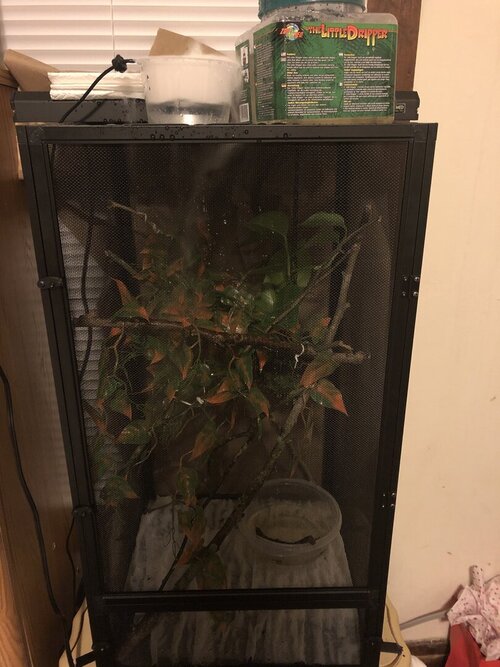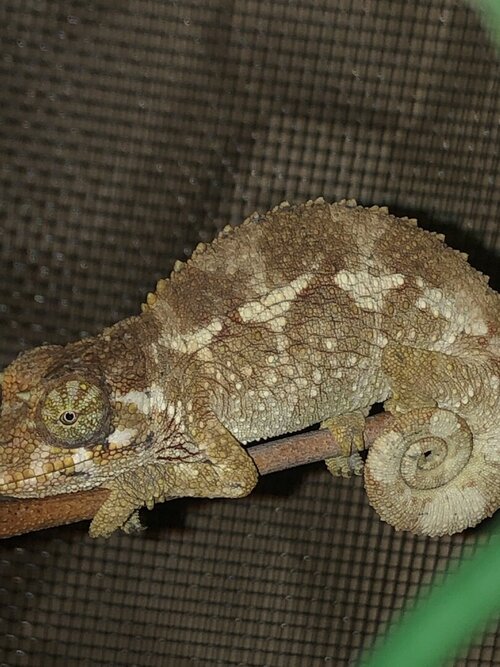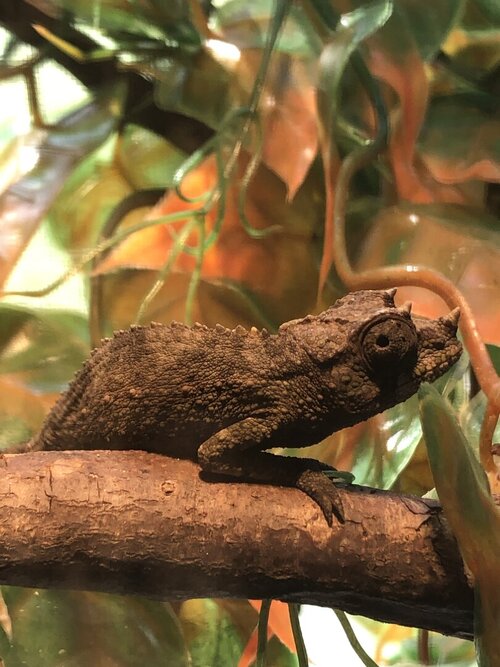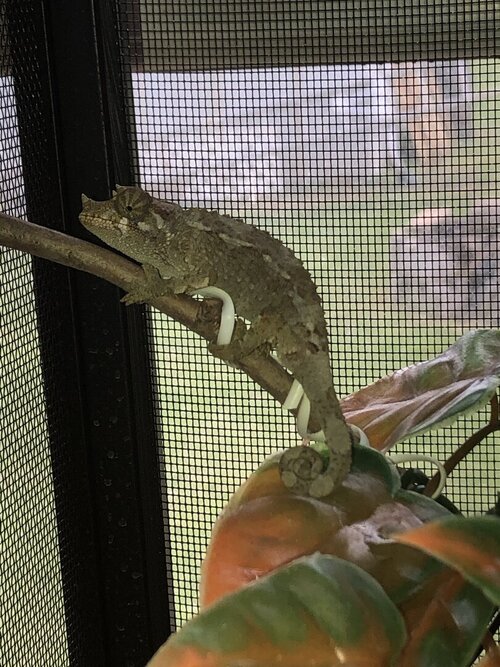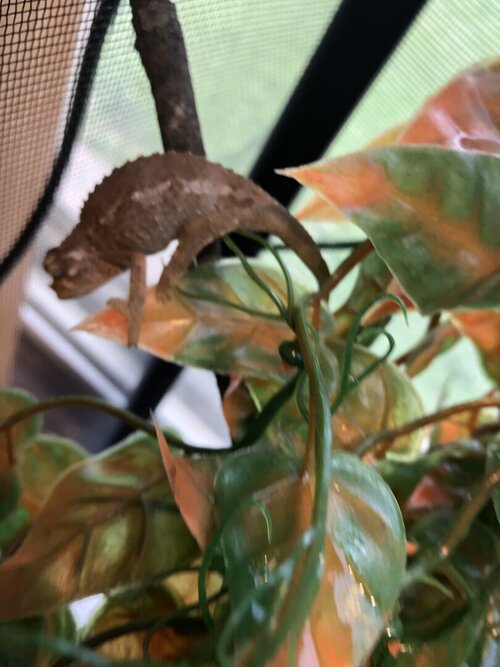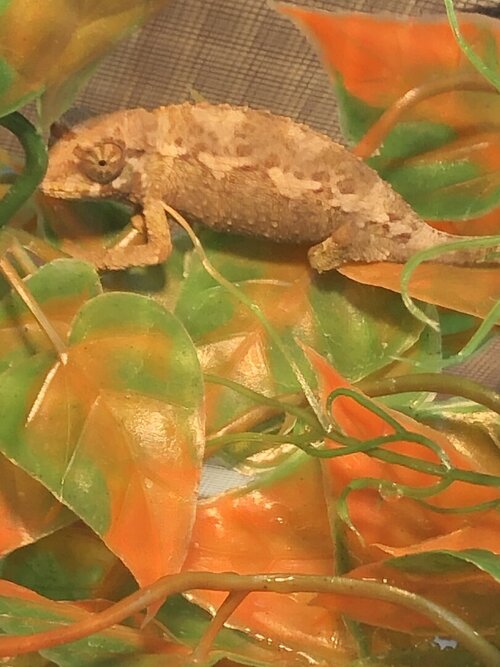Sumo
New Member
My young Jackson’s chameleon suddenly turned gray this evening between about 6 or 7:30 pm she has been doing great and this morning and throughout the day she was doing great with little to no stress colors. The only thing I can think is that she’s dying and that it’s my fault that my baby is gonna die. The only thing that it might be is dehydration, her urates are orange but they are light so I wasn’t very worried about it. But today when I went to check on her around 7:40 she was a gray color.
during the day I spray her enclosure thoroughly with a spray bottle in the morning( around 7:30 am) at around 3 pm. And again around 7:30-8 pm before I turn the light out. At night I run a fogger for about an hour once I turn the light off, and sometimes turn it back on later in the night. I also run it in the morning when I turn the lights on. She also hasn’t been eating very well, in that last couple days she’s been eating a less than good amount of crickets ( 6-7) a day. But before she was only eating one or two a day. I don’t know how old she is. I got her from Petco around two to three weeks ago. I have not taken her to the vet yet.
during the day I spray her enclosure thoroughly with a spray bottle in the morning( around 7:30 am) at around 3 pm. And again around 7:30-8 pm before I turn the light out. At night I run a fogger for about an hour once I turn the light off, and sometimes turn it back on later in the night. I also run it in the morning when I turn the lights on. She also hasn’t been eating very well, in that last couple days she’s been eating a less than good amount of crickets ( 6-7) a day. But before she was only eating one or two a day. I don’t know how old she is. I got her from Petco around two to three weeks ago. I have not taken her to the vet yet.

